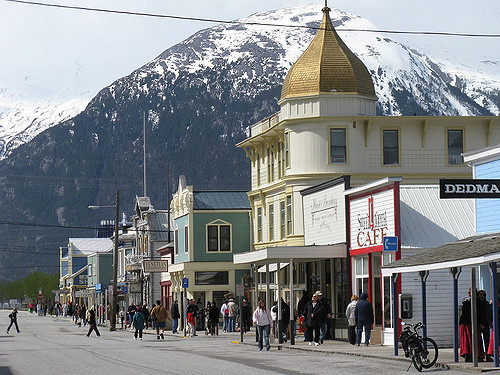Student posts
-
My Juneau Map; My life generally revolves around music and my kids.
-
My Schools: A Walking Tour
-
Denali West Buttress
-
Juneau : The Constant Tourist
-
Place: Where to eat in Fairbanks, Alaska
-
Girdwood
-
Run Wild in Missoula Montana
-
My Many Places
-
Visiting Juneau, where I’m from: A Walking and Driving tour
-
Place- Douglas Island
Place is identified in terms of the relationships within and between physical characteristics (e.g. topography, vegetation, climate) and human characteristics (e.g. economic activity, settlement, land use). Places have distinctive features which give them meaning and character. A description of place, therefore, has an element of human subjectivity. The description depends on what characteristics about a place you choose to value and highlight and how you organize or classify that information. The Geography Toolkit
Students should read assignment and consider their response prior to our June 14 class where we will use class time for design work.
Assignment: Design a map representation of an Alaskan place. Preferably one you are familiar with or want to know more about. (As an alternative, Alaskan newbies can use a non-Alaskan location if they get stuck.)
Design your map using Google MyMaps and be sure to include at least 6 destinations. And be sure to attach about 10 content elements to the map – these could be photographs, videos or links to attractions. You may wish to design it as a walking or driving tour of your destinations.
Scroll down for video instructions. Need ideas? Check out MyMaps Gallery and find more on MyMaps techniques.
All content should be geotagged to the map at its actual location (or close to it). The map can represent a contemporary setting or be based on a historic perspective. If you prefer you can design it from an indigenous perspective.
When your map is complete, embed it in a blog post that details what you hoped to convey in your map, and/or what you learned from the experience.
Background: Places are locations having distinctive features that give them meaning and character that differs from other locations. Therefore, places are human creations, and people’s lives are grounded in particular places. We come from a place, we live in a place, and we preserve and exhibit fierce pride over places.
Places are jointly characterized by their physical and human properties. Their physical characteristics include landforms, climate, soils, and hydrology. Things such as language, religion, political systems, economic systems, and population distribution are examples of human characteristics. Places change over time as both physical and human processes change and thus modify the characteristics of a place. Places change in size and complexity as a result of new knowledge, ideas, human migrations, climatic changes, or political conflicts. From National Geography standards
Image credit: Skagway, Alaska by Jasperdo
Looking south on Broadway. The building with the gold dome is the Golden North Hotel, which was built by the Klondike Trading Company in 1898. “The Gateway to the Klondike”, Skagway served as the main stepping off point for the Klondike Gold Rush of 1898. Today, it is a well preserved, very historic town, in a beautiful setting.
